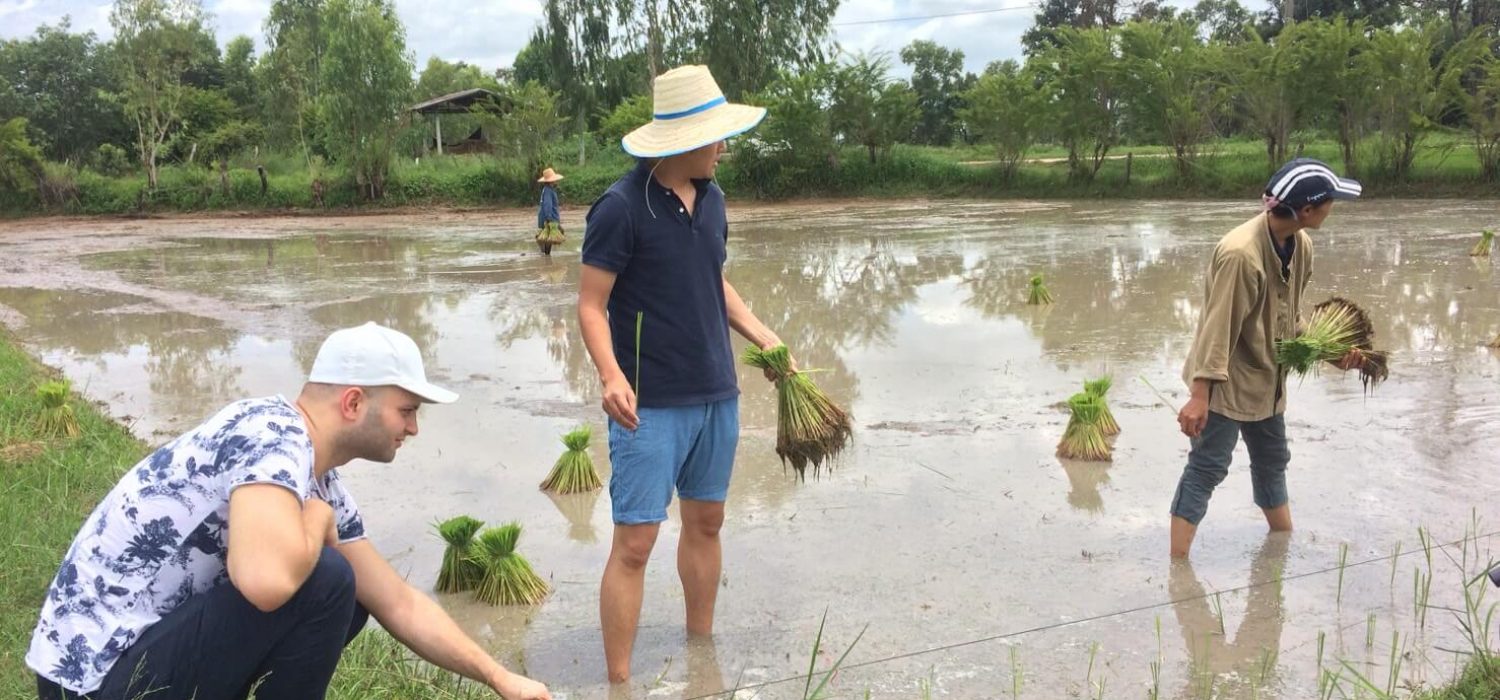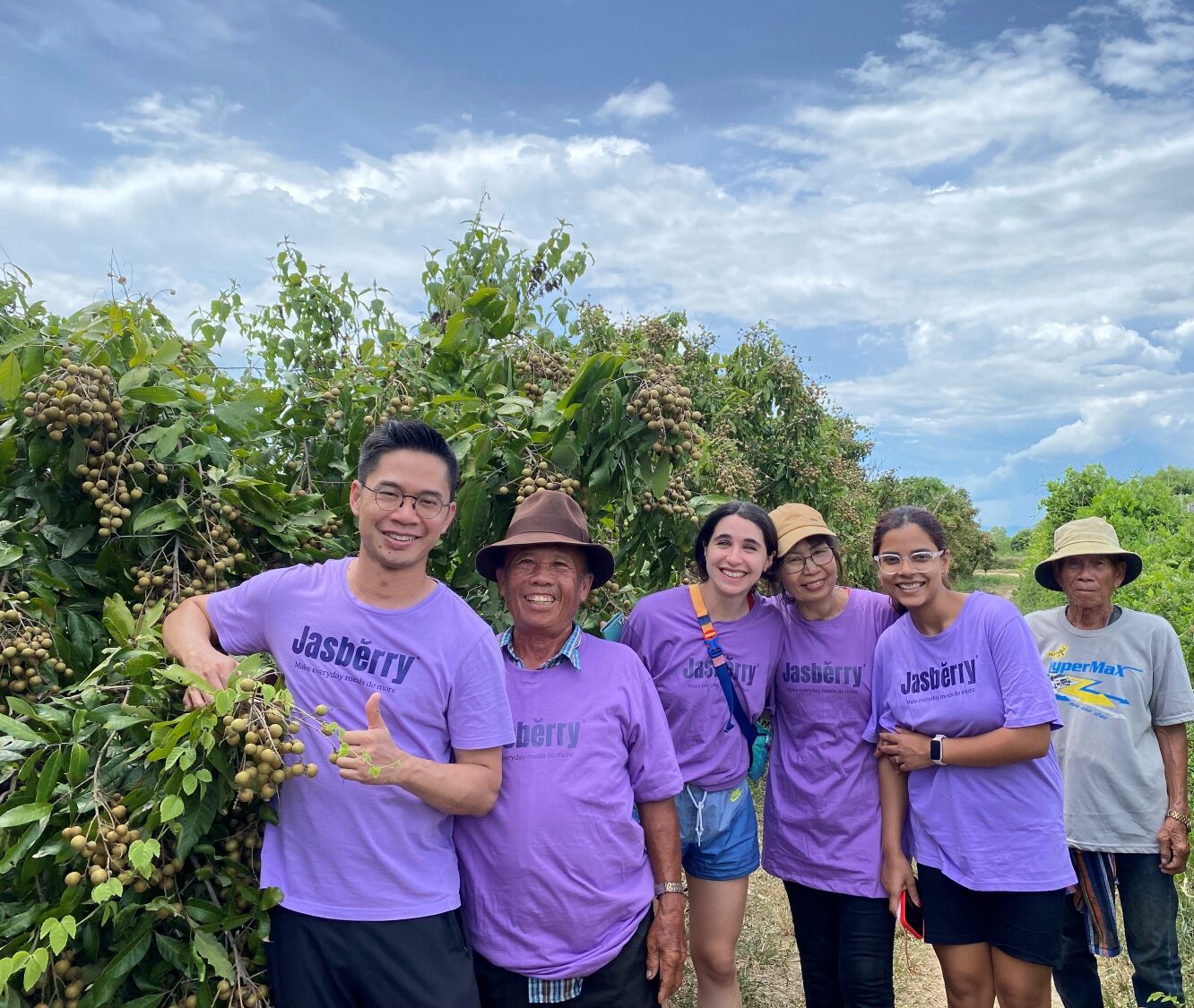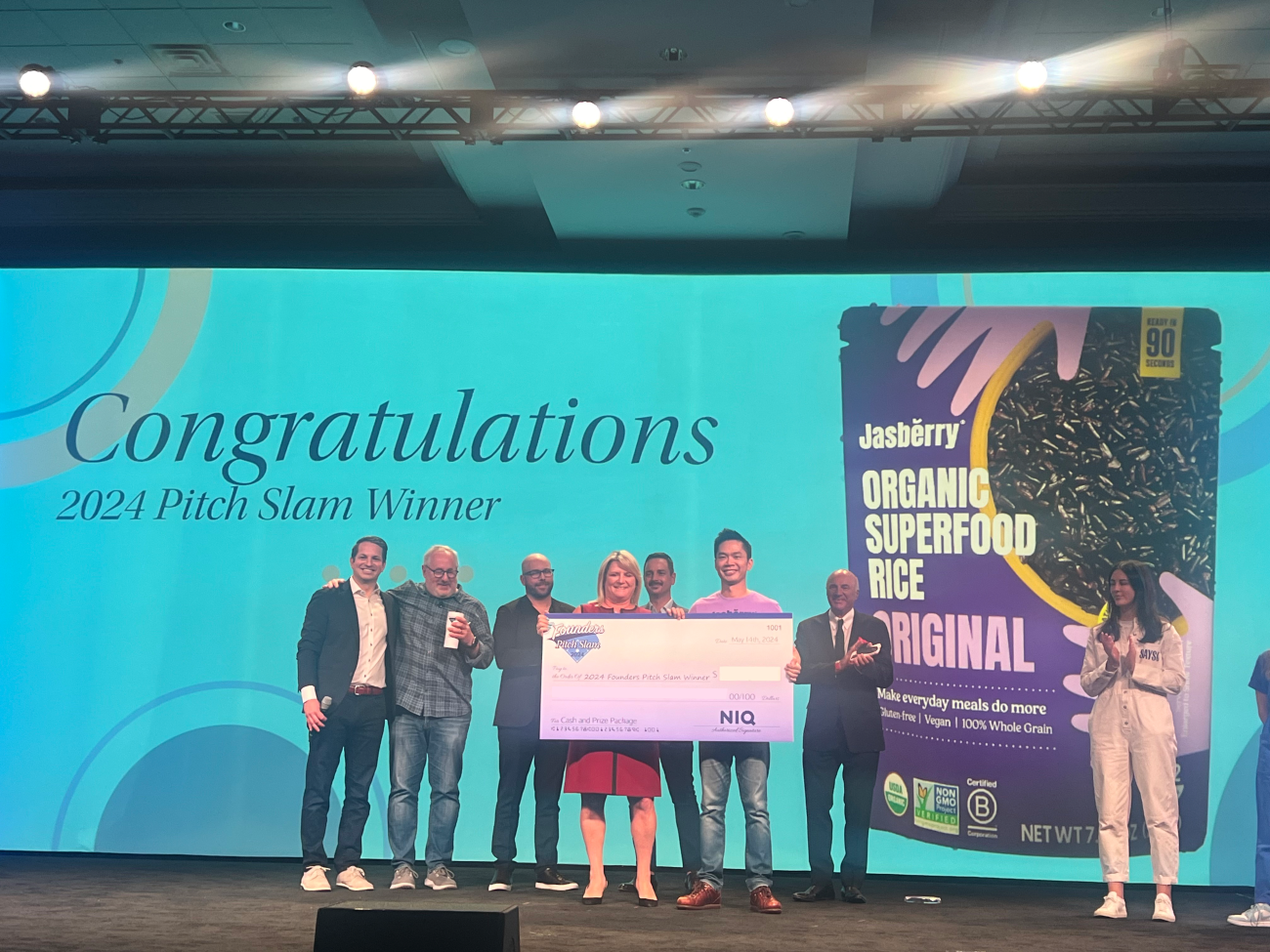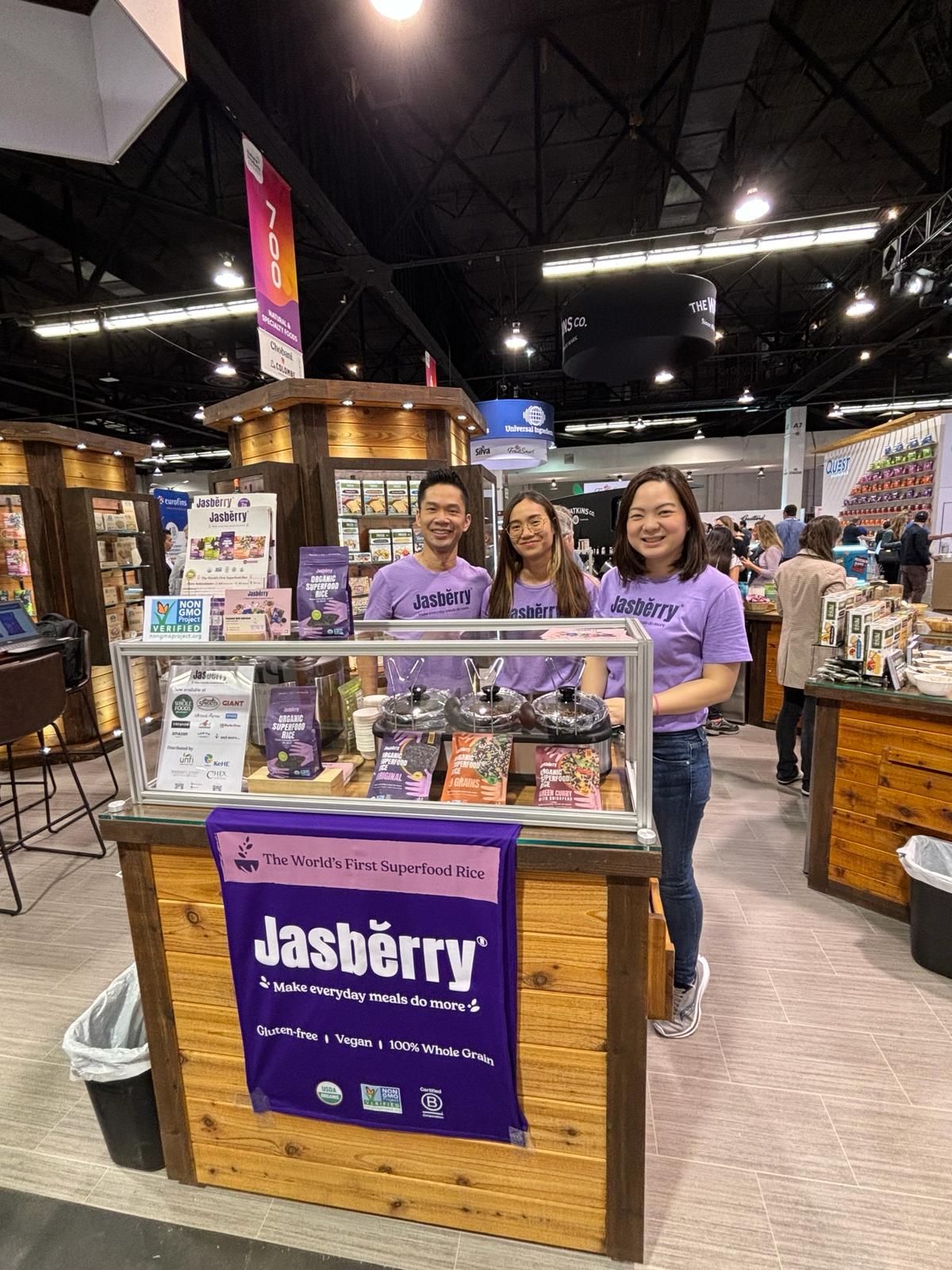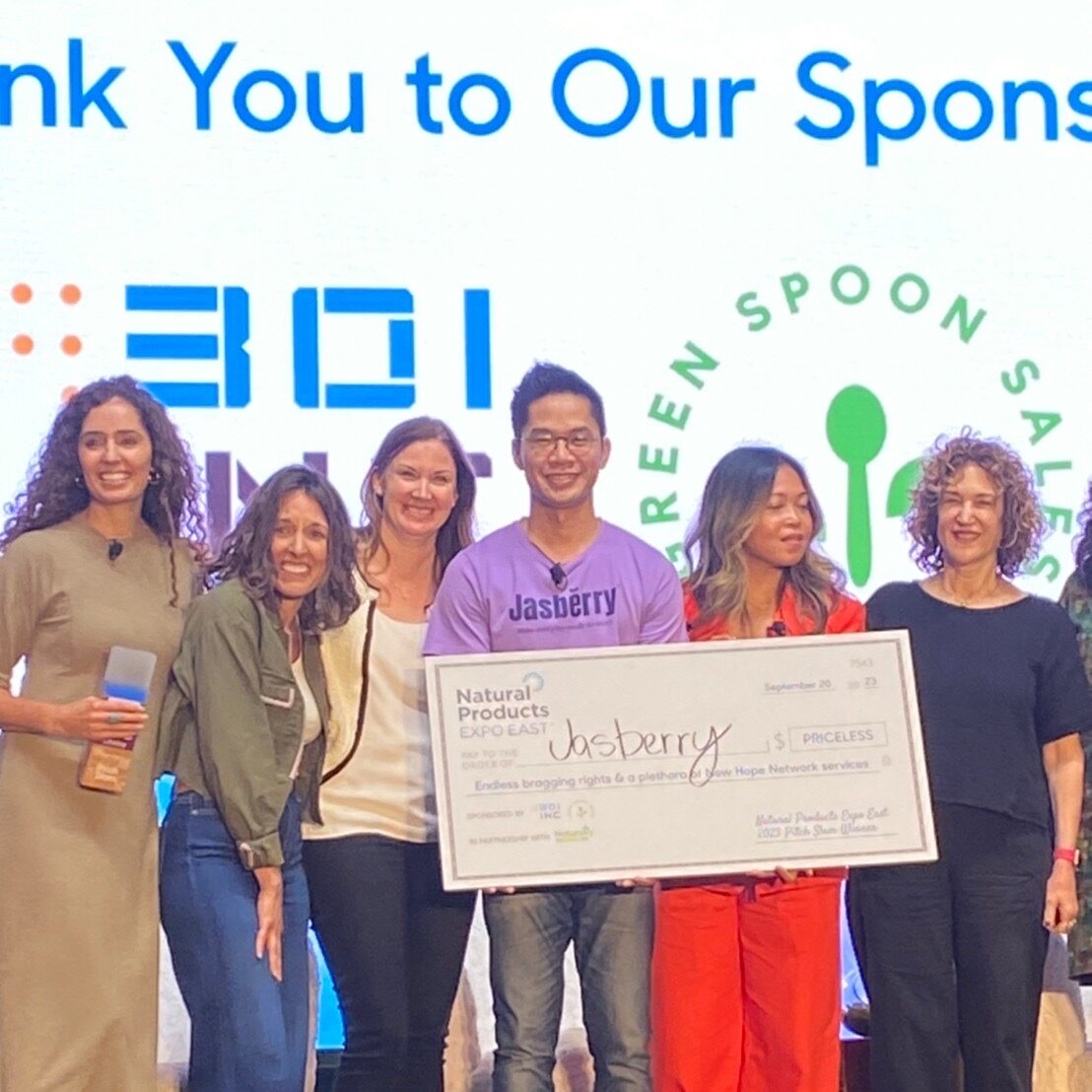Where does the rice on our plates come from? What work goes behind growing and milling the rice we eat? Our Marketing Intern, Damian from Germany, got a first-hand look when we sent him to the field to plant Jasberry rice with our farmers:
With the help of our Field Coordinator, Nhon, it was possible for me to visit our farmers and get a general overview of where Jasberry rice comes from. I gained many insights on how rice is planted, grown and processed, and also learned how much work and energy is behind every package of rice that we see and buy in the supermarket.
Our journey started at Bangkok’s Don Muang Airport at 6.20am. Relatively tired from the short night, the anticipation was still very great. The flight was on time and short, and in just over an hour we reached Roi Et Airport.
After we arrived at the airport, we picked up a rental car to drive to Yasothon, the province where the rice fields we were visiting were located. The ride took just over an hour from Roi Et, and the area we drove through looked very nice and natural. Over time, the surroundings became more and more rural. It was a pretty rare view for me, since my previous experiences in Thailand have mostly been in Bangkok or on the islands. However, these are mostly dominated by a design that appeals to foreign tourists. Therefore, seeing a very local part of Thailand without tourists was a pleasant experience for me.
Rice Planting
We eventually reached Yasothon and met the leader of the farmer cooperative we were visiting. The cooperative leader is also a farmer herself, and works actively in the rice fields. Along with meeting the cooperative leader, we met other farmers and I introduced myself. After I changed my clothes and prepared for the farm, we drove a few more minutes to the rice fields nearby.
In the middle of the rice fields, I realized that my idea of what I thought a rice field was like was different from what it actually was — the fields were very large and filled with a lot of water, but I had actually expected rice fields to be much more dry. Thus, my clothes were not necessarily suitable (especially the pants) for farming. But at least I can now say that I finally know what a rice field looks like! One of the rice fields was extremely wet and the ground was practically under water, however the field was empty and no plants were growing. The farmers planted Jasberry rice plants in this empty field, while I was responsible for the symmetry of the planting rows. I had to hold a stick, always at the same distance, which was connected to a string and another stick on the opposite side. With this string, the farmers could always see where to plant the rice plants in order to get uniform symmetry and maximum yields.
The results of the planting will be seen four months later in November when the Jasberry rice will be ready for harvest, so the farmers invited me to come back then. The work in one field lasted about 2.5 hours, after which I was well tanned by the sun! After work, the families of the farmers invited us for lunch, which was very, very local but also very delicious! Afterwards, we said goodbye to all the farmers and journeyed to the facility where Jasberry rice is milled.
Rice Milling
When we arrived at the rice mill, we were greeted by mill’s owner. He explained the daily operations of the mill to us. After harvesting rice from the paddies, farmers collect their rice and bring it to the mill for processing. The rice is cleaned with a special machine, and any rice that does not meet color and quality standards is removed. Machines then mill the rice to remove the husk while preserving the whole grain.
The mill can also process rice for other products. For example, the rice grains can be cut into even smaller pieces and sent to baby food producers. If any unwanted rice remains, it will not be thrown away but processed into animal feed and bought back by farmers to feed their livestock. Thus, no rice grain is wasted. With new knowledge and experience gained by the visit, I thanked the mill owner and said goodbye. After a quick dinner, we took the last flight back to Bangkok and landed just before 10pm.
What I Learned
The journey to the rice fields and mill has given me many insights and experiences that I never would have expected:
1. Starting with the fact that besides Bangkok and the islands, there are actually other, much more traditional places in Thailand that are worth seeing. Yasothon’s local flair has shown me how easily many people in Bangkok live and how privileged we are in some ways. Still, the people we met in Yasothon seem to be happy with their way of living! Farmers always greeted us with a friendly smile and a lot of kindness. Because of their hospitality, I never felt uncomfortable during the trip.
2. Being a rice farmer is an extremely physical job that requires a lot of strength. It is amazing that most farmers are older and still have not lost their motivation and strength. The strong sun made working conditions more difficult, but nobody complained or took breaks during the planting. The rice field was planted quickly and everyone gave their best.
3. Even though much work in the mill is done by machines, a lot of manual work is still needed. Rice production does not end with the harvest — it is just the beginning. Through the trip I have understood these procedures much better.
4. No rice is thrown away or wasted, and products like animal feed can be made out of any unwanted rice.
5. I feel like I appreciate the rice that I eat much more now, because now I am more aware of the whole process and work behind it. It takes a lot of energy, work and diligence to produce the rice we can buy everyday in the supermarket. The work of rice farmers must be highly appreciated and respected.
I absolutely enjoyed the trip and came back with many new insights and experiences. Many thanks to the entire Jasberry team, especially to Nhon for letting me have this opportunity!

